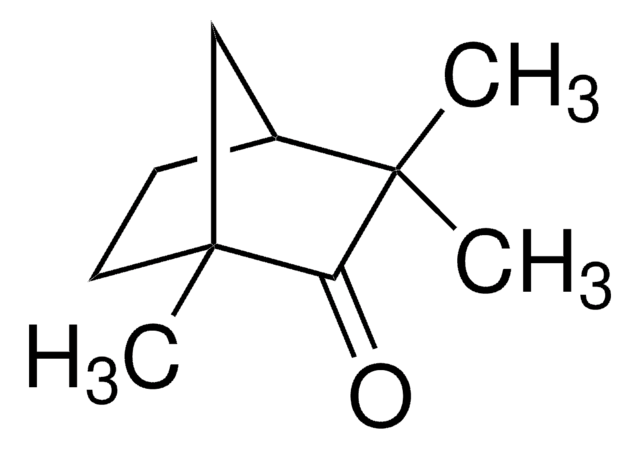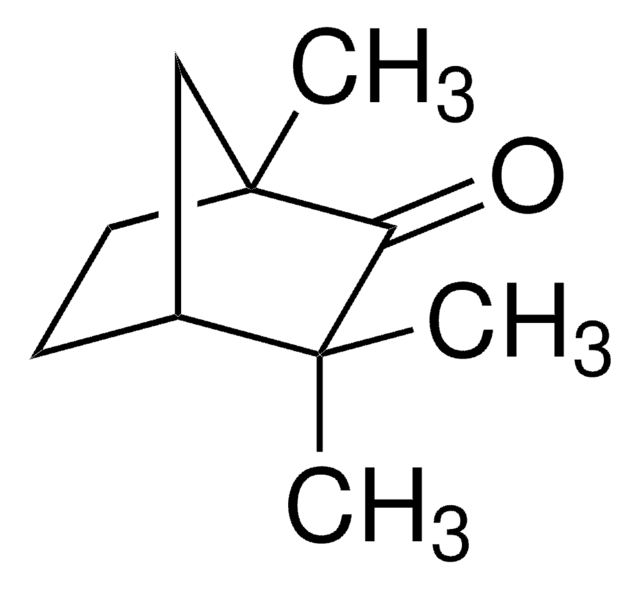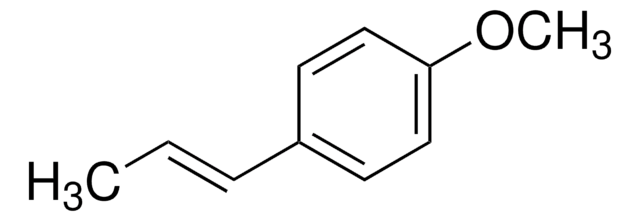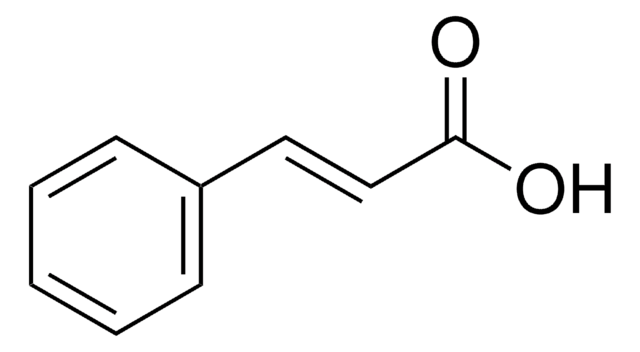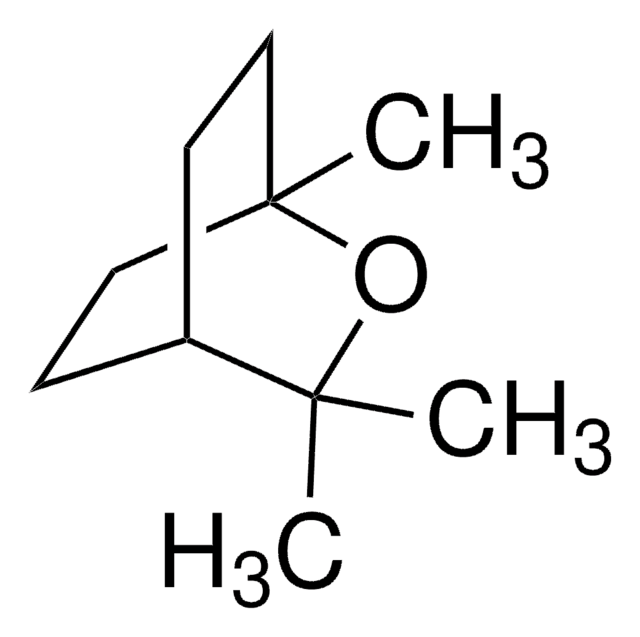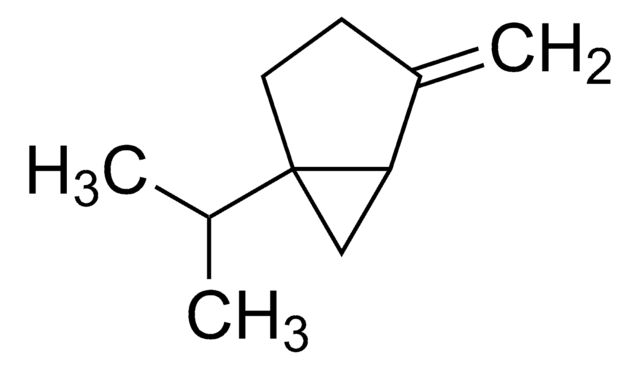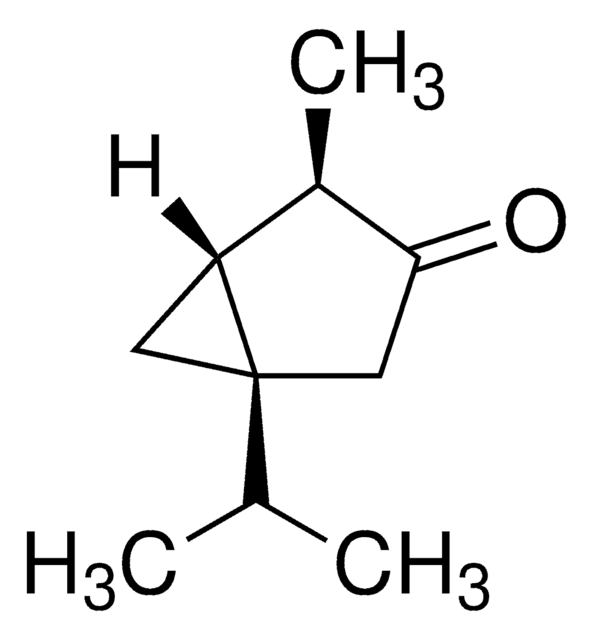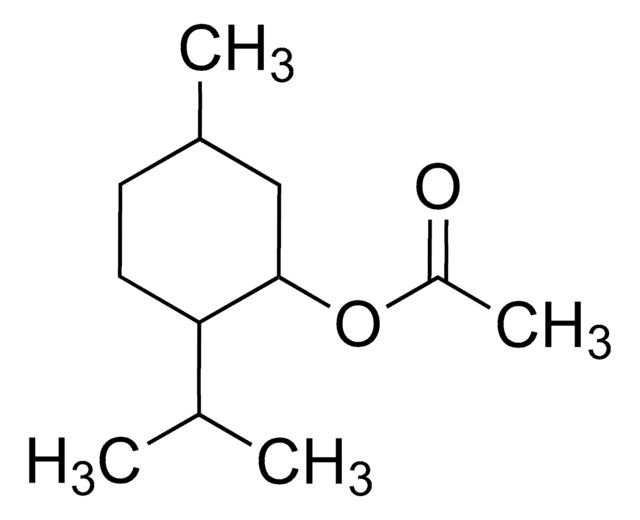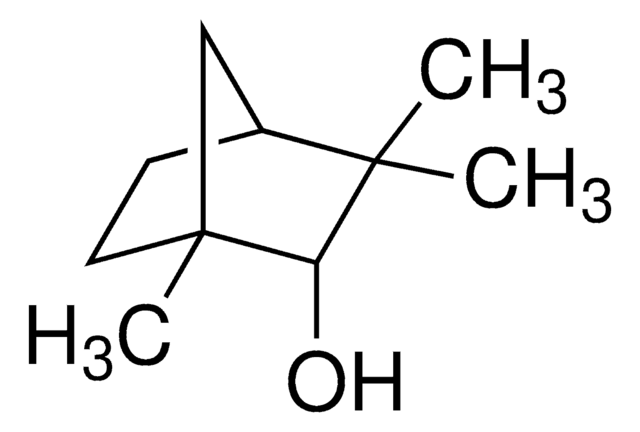W507709
L-Fenchone
≥98%
Sinonimo/i:
(1R)-(−)-Fenchone, (−)-1,3,3-Trimethyl-2-norbornanone, (−)-Fenchone, (1R)-1,3,3-Trimethylbicyclo[2.2.1]heptan-2-one
About This Item
Prodotti consigliati
Origine biologica
synthetic
Grado
Fragrance grade
Halal
Kosher
agenzia
follows IFRA guidelines
meets purity specifications of JECFA
Conformità normativa
EU Regulation 1223/2009
Saggio
≥98%
Attività ottica
[α]20/D −51°, neat
Indice di rifrazione
n20/D 1.461 (lit.)
P. ebollizione
192-194 °C (lit.)
Punto di fusione
5-6 °C (lit.)
Densità
0.948 g/mL at 25 °C (lit.)
applicazioni
flavors and fragrances
Documentazione
see Safety & Documentation for available documents
Allergene alimentare
no known allergens
Allergene in fragranze
no known allergens
Organolettico
camphoraceous; earthy; woody
Stringa SMILE
CC1(C)C2CCC(C)(C2)C1=O
InChI
1S/C10H16O/c1-9(2)7-4-5-10(3,6-7)8(9)11/h7H,4-6H2,1-3H3/t7-,10+/m0/s1
LHXDLQBQYFFVNW-OIBJUYFYSA-N
Cerchi prodotti simili? Visita Guida al confronto tra prodotti
Categorie correlate
Descrizione generale
Esclusione di responsabilità
Indicazioni di pericolo
Consigli di prudenza
Classi di pericolo
Aquatic Chronic 2
Codice della classe di stoccaggio
10 - Combustible liquids
Classe di pericolosità dell'acqua (WGK)
WGK 2
Punto d’infiammabilità (°F)
151.7 °F - closed cup
Punto d’infiammabilità (°C)
66.5 °C - closed cup
Dispositivi di protezione individuale
Eyeshields, Faceshields, Gloves, type ABEK (EN14387) respirator filter
Scegli una delle versioni più recenti:
Possiedi già questo prodotto?
I documenti relativi ai prodotti acquistati recentemente sono disponibili nell’Archivio dei documenti.
I clienti hanno visto anche
Global Trade Item Number
| SKU | GTIN |
|---|---|
| W507709-100G-K | 4061838183583 |
| W507709-1KG | |
| W507709-SAMPLE | |
| W507709-SAMPLE-K | 4061838194244 |
| W507709-100G | |
| W507709-1KG-K | 4061838183590 |
| W507709-5KG | |
| W507709-5KG-K | 4061838183606 |
Il team dei nostri ricercatori vanta grande esperienza in tutte le aree della ricerca quali Life Science, scienza dei materiali, sintesi chimica, cromatografia, discipline analitiche, ecc..
Contatta l'Assistenza Tecnica.